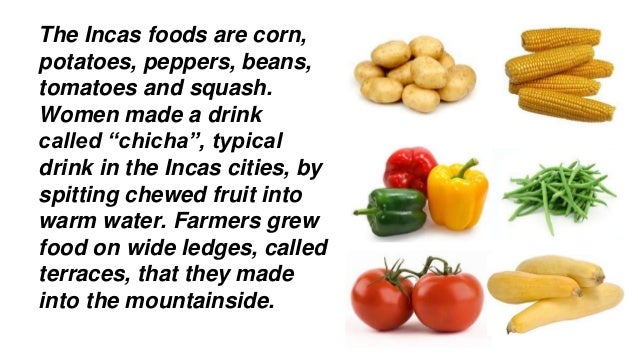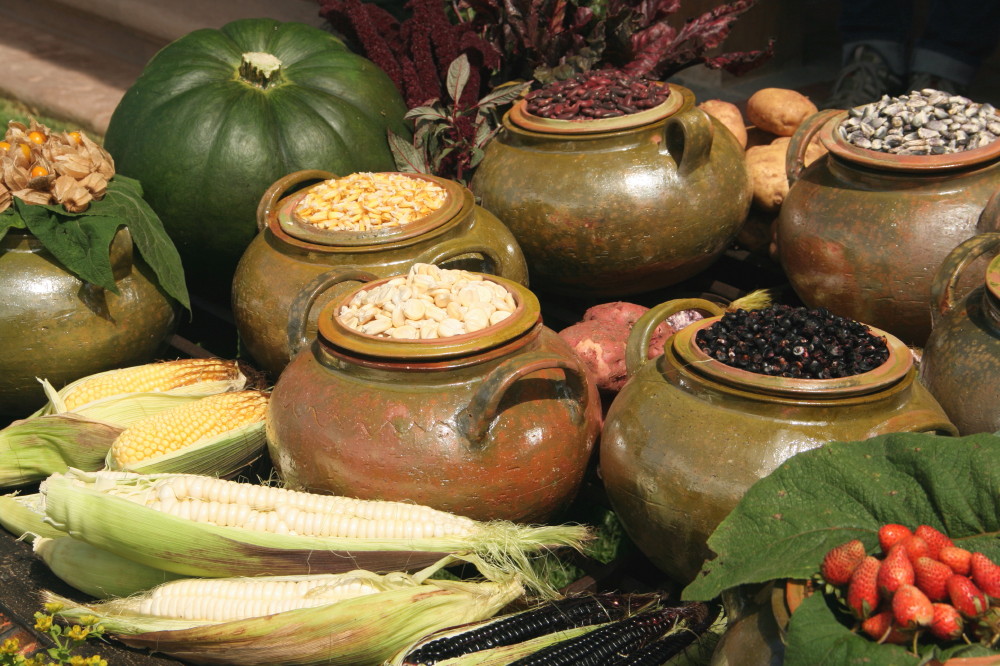The Incas, an advanced civilization that thrived in South America from the 13th to 16th centuries, possessed a rich and diverse culinary tradition closely tied to their agricultural practices. Their staple crops formed the foundation of their diet, supplemented by a variety of fruits, vegetables, and animal protein sources.

Staple Crops:
Maize (Corn): Maize, or corn, held a central place in Inca cuisine. It was ground into flour to make bread, porridge, and the iconic Inca dish, humitas (steamed corn cakes wrapped in corn husks).

Potatoes: Native to the Andes, potatoes were a staple of the Inca diet. They were cultivated in various forms, including the common white potato, the colorful rainbow potato, and the miniature baby potato.
Quinoa: Quinoa, a grain-like crop, was a primary source of protein and essential nutrients for the Incas. It was cooked into soups, stews, and porridges, often combined with vegetables or meat.
Amaranth: Amaranth, another grain-like crop, was used to make porridge, flatbreads, and a type of popped grain called “kiwicha.”
Fruits and Vegetables:
Tomatoes: Tomatoes were a common ingredient in Inca dishes, used in sauces, stews, and relishes.
Ají Peppers: Ají peppers, a type of chili pepper, were used in various forms, from fresh and dried to ground into chili powder. They added spice and flavor to many dishes.
Beans, Squash, and Sweet Potatoes: Beans, squash, and sweet potatoes were important parts of the Inca diet, providing essential vitamins, minerals, and variety to their meals.
Animal Protein Sources:
Llama and Alpaca Meat: Llama and alpaca meat were primary sources of animal protein. They were used in stews, roasted over open fires, or dried into a type of jerky called “charqui.”
Fish and Seafood: The Incas had access to a variety of fish and seafood from the Pacific Ocean and inland rivers and lakes. They practiced aquaculture in some areas, cultivating fish in artificial ponds.
Guinea Pigs: Guinea pigs were also consumed as a source of protein. They were typically roasted or stewed.
Beverages:
Chicha: Chicha, a fermented alcoholic beverage made from maize, held cultural and ritual significance in Inca society. It was consumed during festivals and celebrations.
Fruit Juices and Fermented Drinks: Fruit juices, particularly from fruits like pineapple and guanabana, were enjoyed as refreshing drinks. Fermented beverages made from fruits, maize, or roots were also consumed.
In addition to the above, the Incas were known to gather and consume wild plants, herbs, and spices, which added flavor and medicinal properties to their cuisine. Their ability to utilize a wide range of resources and adapt to different ecological zones allowed them to maintain a varied and nutritious diet.










